Image Archive

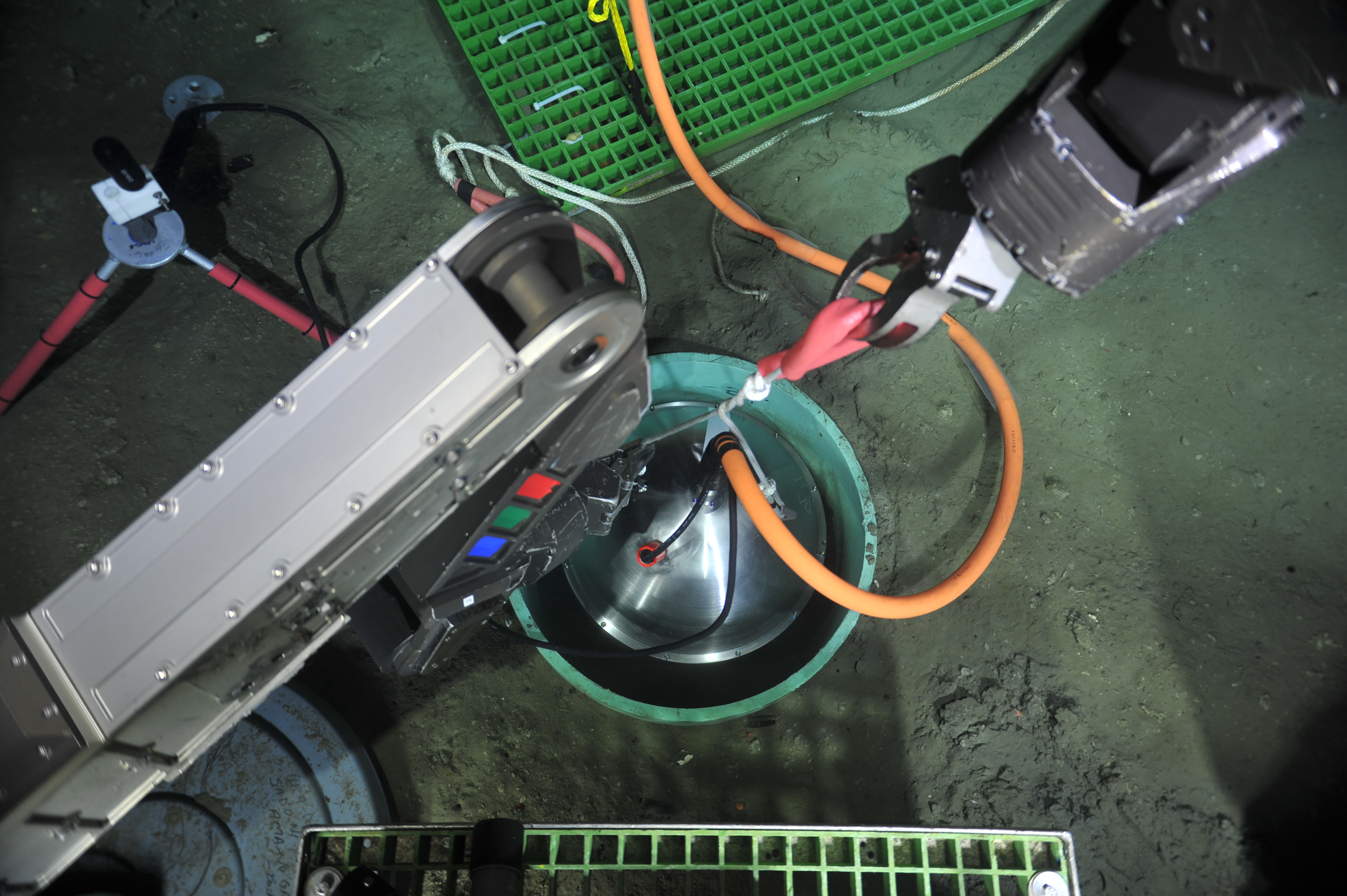










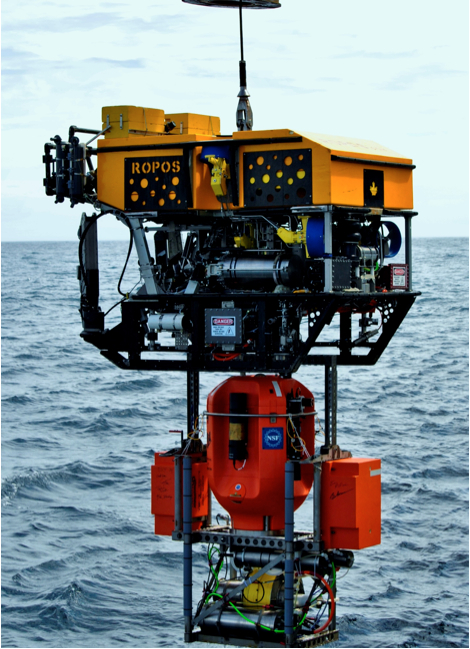
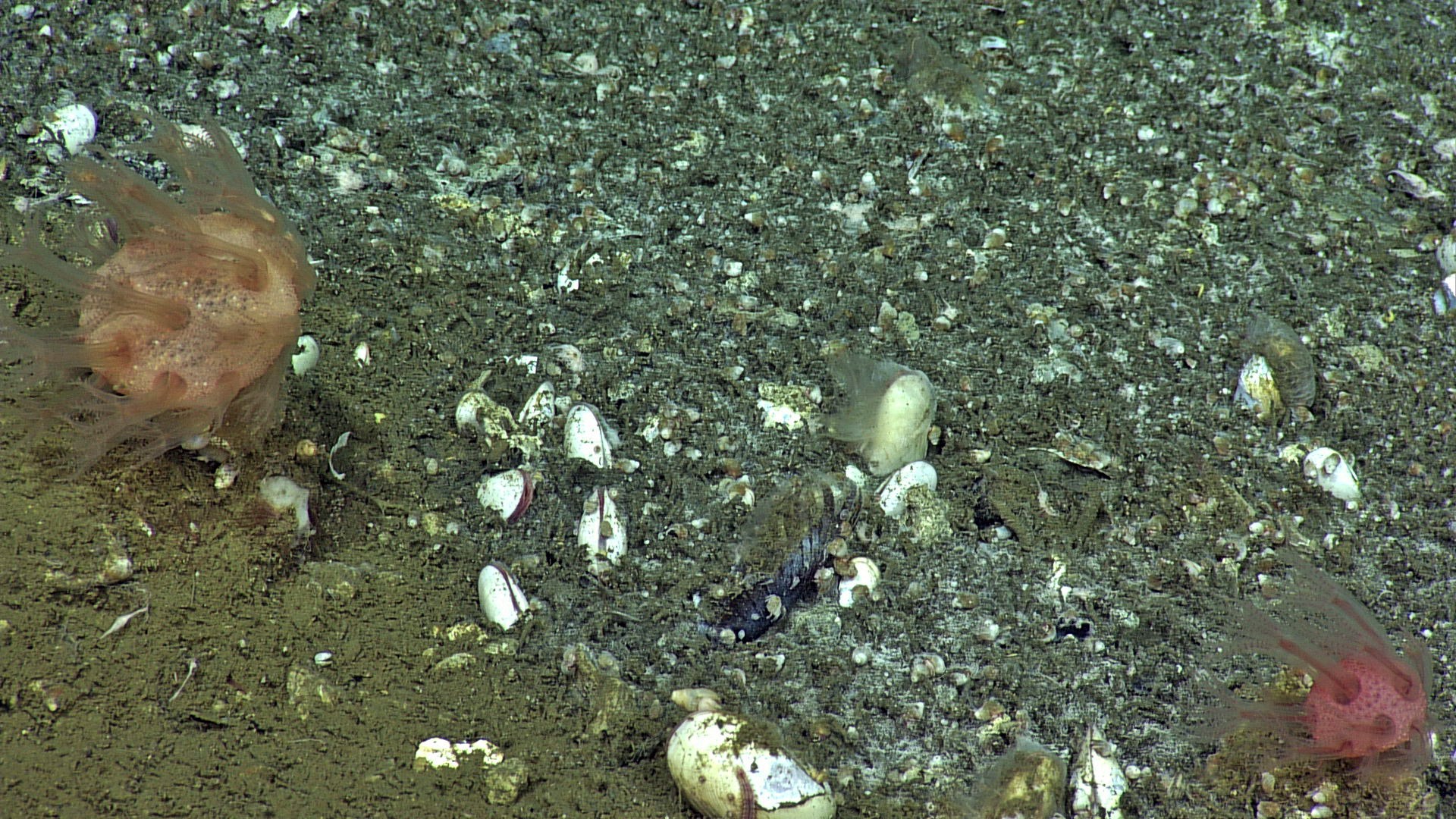



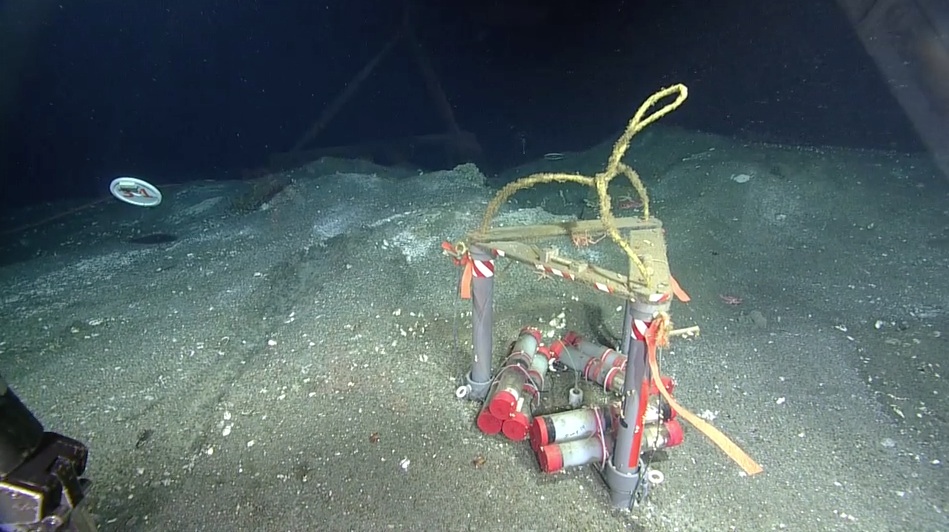
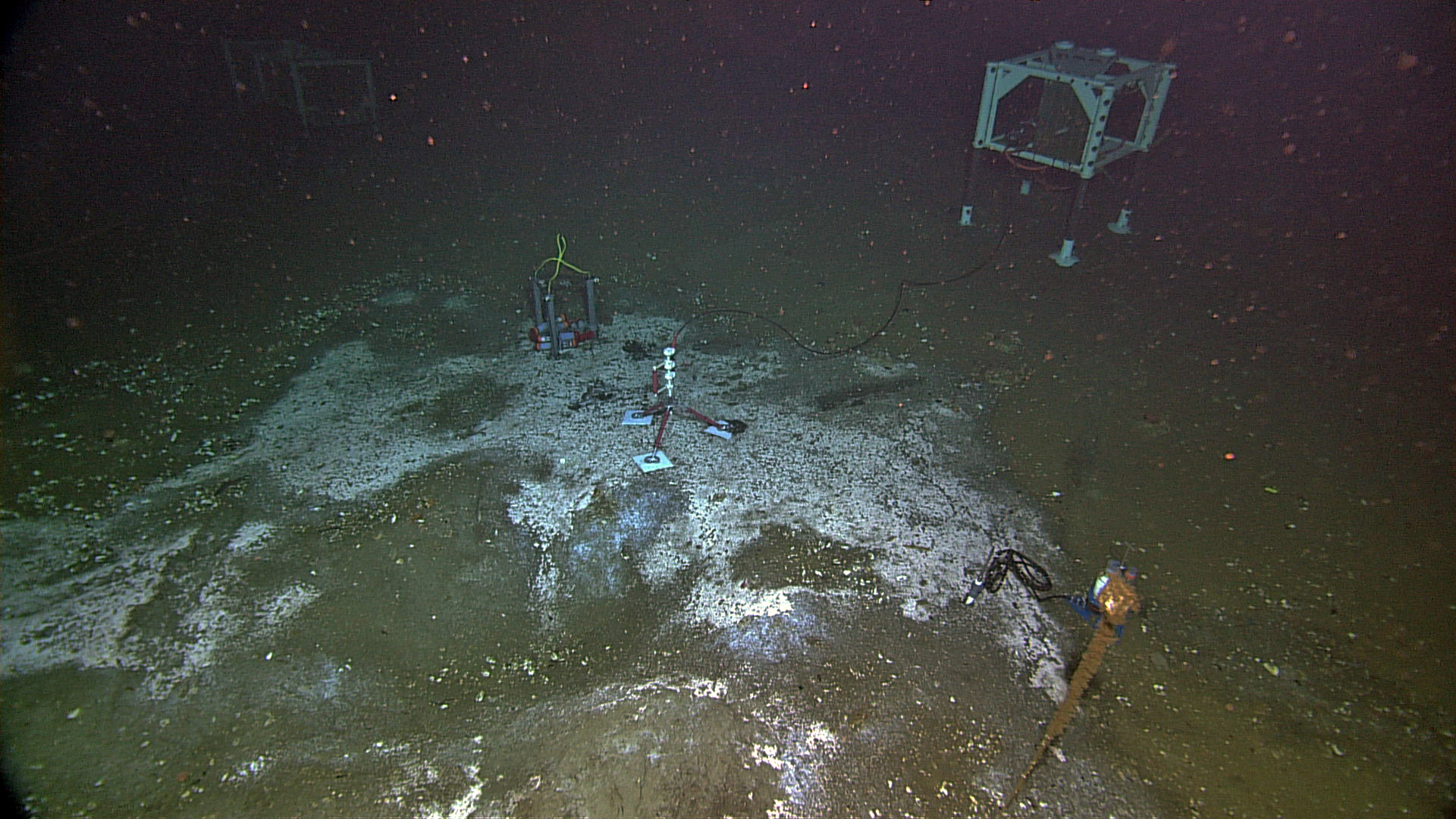


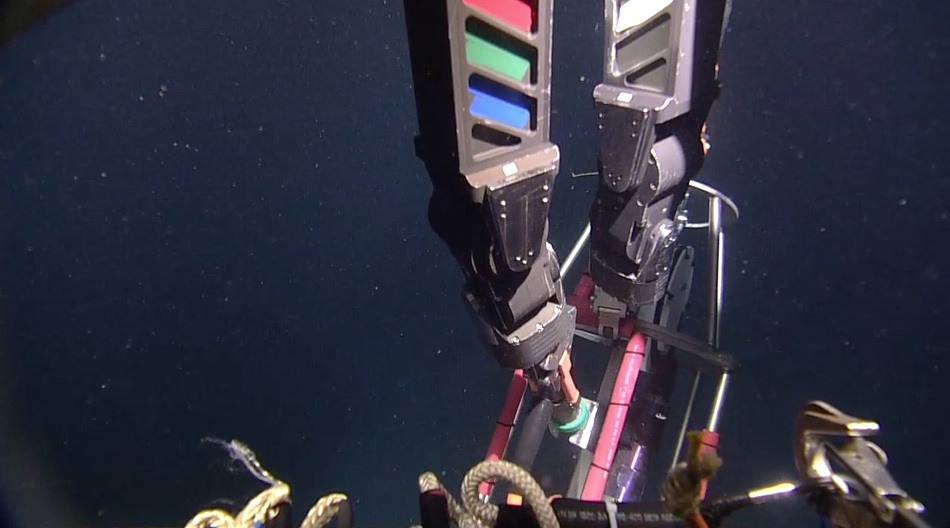

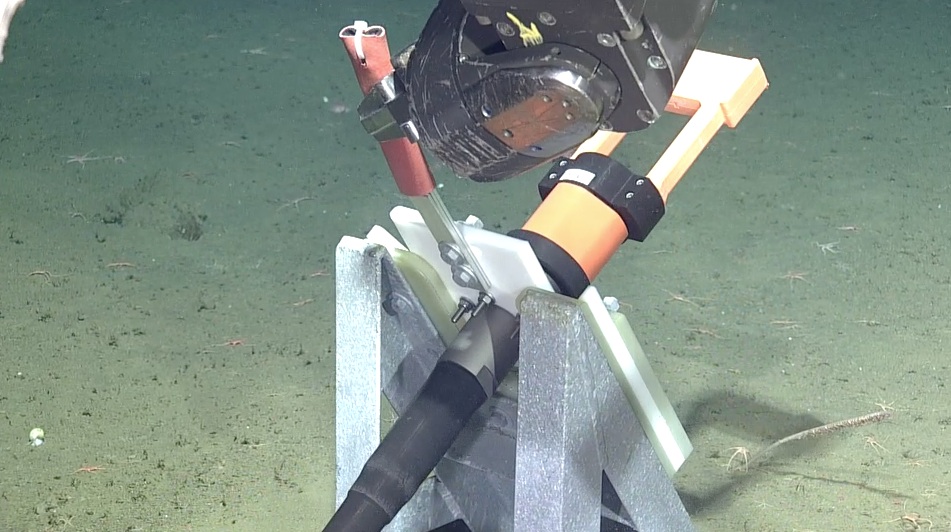
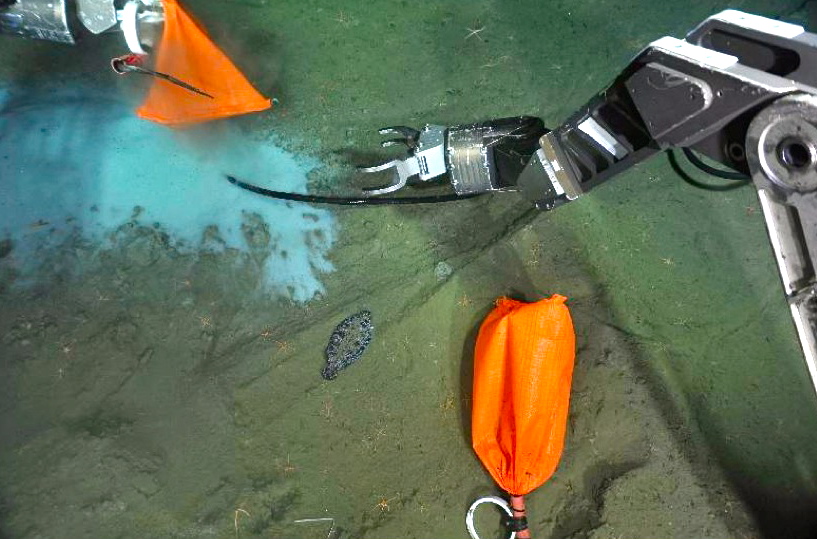




A pod of dolphins surf the waves alongside the R/V Thompson as it was in transit.Credit: Mitch Elend, University of Washington, V14.

A broadband seismometer installed inside a buried cassion at Southern Hydrate Ridge by the ROV ROPOS. A follow-on dive will fill the caisson with silica beads, which dampens noise. The broadband and low frequency hydrophone is installed here to detect both large and small earthquakes that may impact the release of methane gas into the hydrosphere. Credit: UW/NSF-OOI/CSSF; ROPOS Dive R1779; V14.

Snails form yellow egg stacks and are surrounded by sea anemones at a water depth of ~ 114 m off Oregon. Photo credit: NSF-OOI/UW/CSSF; Dive R1780; V14.

An ~60 m tall carbonate pinnacle, west of the active seep site at Southern Hydrate Ridge, hosts abundant soft pink corals and is a rich habitat for squat lobsters, clams, a variety of fish, and crabs. Credit: UW/NSF-OOI/CSSF; Dive R1779; V14.

During Leg 4 of the VISIONS'14 Expedition, the R/V Thompson made a quick visit into Newport Oregon to onload some equipment. Photo Credit: Mitch Elend, University of Washington, V14.

Danielle Dhanens is a senior in Oceanography at the University of Washington. She is a member of the Leg 4 VISIONS'14 Science Party. Photo Credit: Ed McNichol, Mumbian Enterprises, Inc., V14.

Tysen Mulder is a senior in mechanical engineering at the University of Washington and is a member of the Leg 4 Science Party, VISIONS'14. Photo Credit: Ed McNichol, Mumbian Enterprises, Inc., V14.

Taylor Faubion is a biochemistry major at the University of Washington and is on Leg 4 of the VISIONS'14 Expedition. Photo Credit. Ed McNichol, Mumbian Enterprises, V14.

Kevin Simans, a recent UW, College of the Environment, School of Oceanography graduate. He is a member of the Leg 2 VISIONS'14 Science Party. Photo Credit: Ed. McNichol,© 2014 Mumbian Enterprises, Inc, V14.

Sometimes the blue of the skies and sea nearly merge...Its great to be at sea. Photo Credit: Mitch Elend, University of Washington; V14.

September 4, 2014 saw beautiful blue skies and equally beautiful seas. Photo Credit. Mitch Elend, University of Washington, V14.

University of Washington, College of the Environment undergraduate students help Rick Berg, a graduate student in the School of Oceanography, sample fluids collected for a year at an active methane seep at Southern Hydrate Ridge. Photo Credit. Mitch Elend, University of Washington, V14.

The instrumented science pod and winched profiler system are latched beneath the ROV ROPOS for safe transport to the Oregon Offshore mooring where it will be installed on the 13 ft across platform at 197 m water depth. Photo Credit. Billy Medwedeff, University of Washington, V14.

Soft corals bend in the currents at the edge of a bacterial mat. Here, live clams with symbionts thrive in the methane and hydrogen sulfide-rich fluids. Credit: UW/NSF-OOI/CSSF; ROPOS Dive R1773; V14.

Weather from large storms brings in moderate-high winds and white-capped waves that prevent diving operations. Photo Credit: Mitch Elend, University of Washington, V14.

The cable ship, the CS Dependable, works off the bow of the R/V Thompson during cable-laying operations. Photo Credit: Mitch Elend, Uiversity of Washington, V14.

r1773_highlights

r1772_highlights

An in situ, cabled mass spectrometer is installed at a methane seep at the summit of Southern Hydrate Ridge. The OOI-RCA mass spectrometer was built by Peter Girguis, Harvard University. Credit: UW/NSF-OOI/CSSF; ROPOS Dive R1772; V14.

A push core is taken with the ROV ROPOS adjacent to a Mosquit flow meter built by E. Solomon at the University of Washington. The entrapped sediment, pore fluids, and bacterial mats were brought back to the ship for ship- and shore-based analyses. Credit: UW/NSF-OOI/CSSF; ROPOS Dive R1772; V14.

A Mosquito; flow meter (far left) and osmotic fluid sampler (far right) installed in methane seep at Southern Hydrate Ridge. A second Mosquito, colonized by organisms, awaits recovery. These instruments provide fluid chemistry information, as well as calculations of fluid flow in and out of the seafloor. Credit: UW/NSF-OOI/CSSF; Dive R1772; V14.

r1771_highlights

r1770_highlights

r1769_highlights

A Starry Flounder hangs out during installation of short-period seismometers at Southern Hydrate Ridge. Credit: UW/NSF-OOI//CSSF; ROPOS Dive R1769; V14.

One of the gifts of being at sea is watching the ever changing ocean and sky. Photo Credit: Mitch Elend, University of Washington; V14.

Inside the ROPOS control room on the R/V Thompson during predive preparation. Photo Credit: Lauren Kowalski, University of Washington; V14

ROV ROPOS takes a digital-still camera in a tool basket down to the seafloor for installation at the active methane seep called Einstein's Grotto on Southern Hydrate Ridge. Photo Credit: Mitch Elend, University of Washington; V14.
- Anemone
- Animal
- Arthropod
- ASHES
- Axial
- Axial Base
- Axial Biology
- Axial Caldera
- Bacteria
- Basalt Lava
- BEP
- Biofouling
- biolgoy
- Biology
- Camds
- Camera
- Camhd
- Central Caldera
- Ciliates
- Cnidaria
- Coastal Biology
- Crab
- Deep Profiler Mooring
- Dive Highlights
- Eastern Caldera
- Echinoderms
- Endurance Array
- Engineering Team
- ENLIGHTEN 10
- Exploratorium
- Fish
- Geology
- HD Camera
- HPIES
- Hydrate Ridge
- Hydrates
- Hydrophone
- Hydrothermal Vents
- Illustration
- Inshore 80 Meters
- Instrument
- International District
- J-BOX
- Jason
- Jellyfish
- Junction Box
- K12
- Lava
- Mollusk
- Moorings
- Nodes
- Nudibranch
- Octopus
- OOI
- Oregon Offshore
- Oregon Offshore 600 m
- Oregon Shelf
- Oregon Slope Base
- People
- PN1B
- PN1D
- Polychaetes
- PPSDN
- Primary Node
- RASFL
- ROCLS
- ROPOS
- ROPOS Dives
- ROV Team
- RV Revelle
- RV Sikuliaq
- RV Thompson
- Salp
- Sample
- SC13
- Science Team
- Sea Cucumber
- Sea Star
- Sea Urchin
- Seafloor
- Seismometer
- Sensors
- Shallow Profiler Mooring
- Shark
- Shipboard
- Shore Station
- Slope Base
- Smoker
- Soft Coral
- Southern Hydrate Ridge
- Sponge
- Squid
- Students
- Students & Guest Participants
- Tmpsf
- Tubeworms
- VISIONS 11 Leg 1
- VISIONS 11 Leg 2
- VISIONS 11 Viewers
- VISIONS 13
- VISIONS 14
- VISIONS 15
- VISIONS 16
- VISIONS 17
- VISIONS 18
- VISIONS 20
- VISIONS 22
- VISIONS 23
- Visualization
